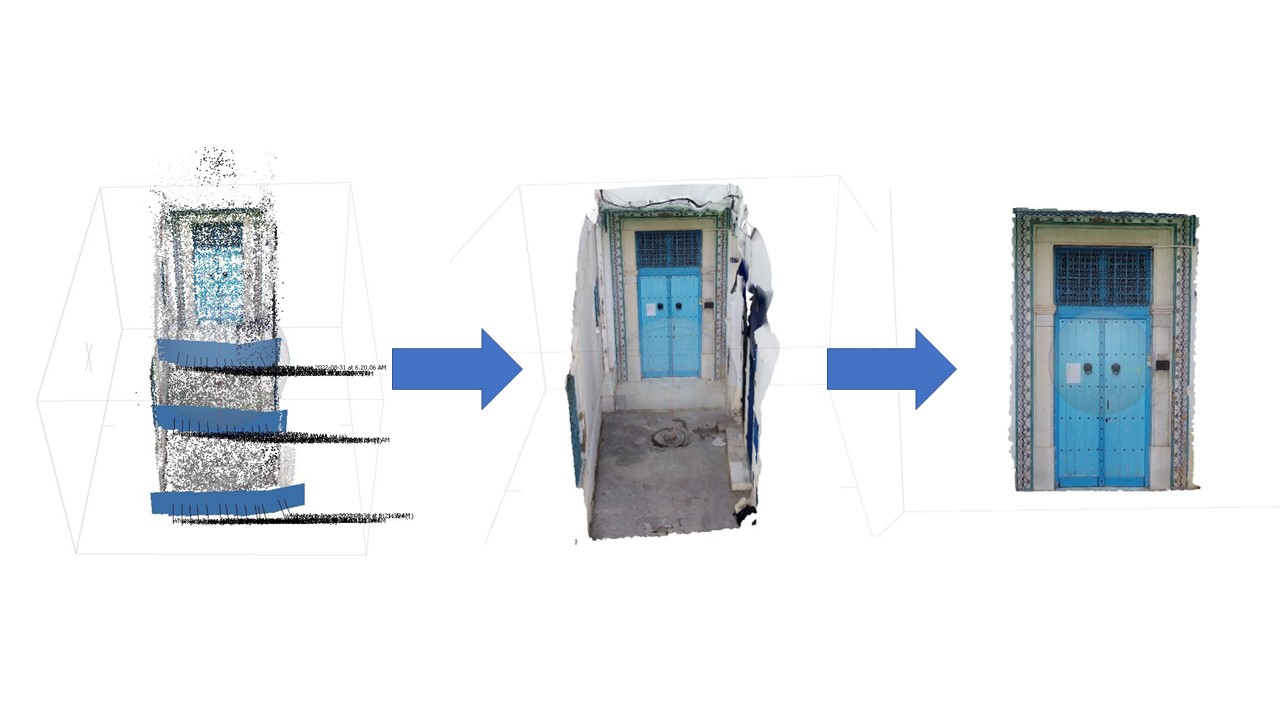

ASOR INITIATIVES TO SAFEGUARD CULTURAL HERITAGE IN NORTH AFRICA
Last year, ASOR Cultural Heritage Initiatives (CHI) [1] received major grant from an anonymous donor to document, preserve, and promote the cultural heritage of ethnic and religious minorities in Tunisia and Morocco by focusing on the rich traditions of communal collaboration within Judaism, Christianity, and Islam. In late 2022, ASOR received a follow-up grant from the anonymous donor to expand the project to Sahel region of Africa (Mali, Niger, Burkina Faso).
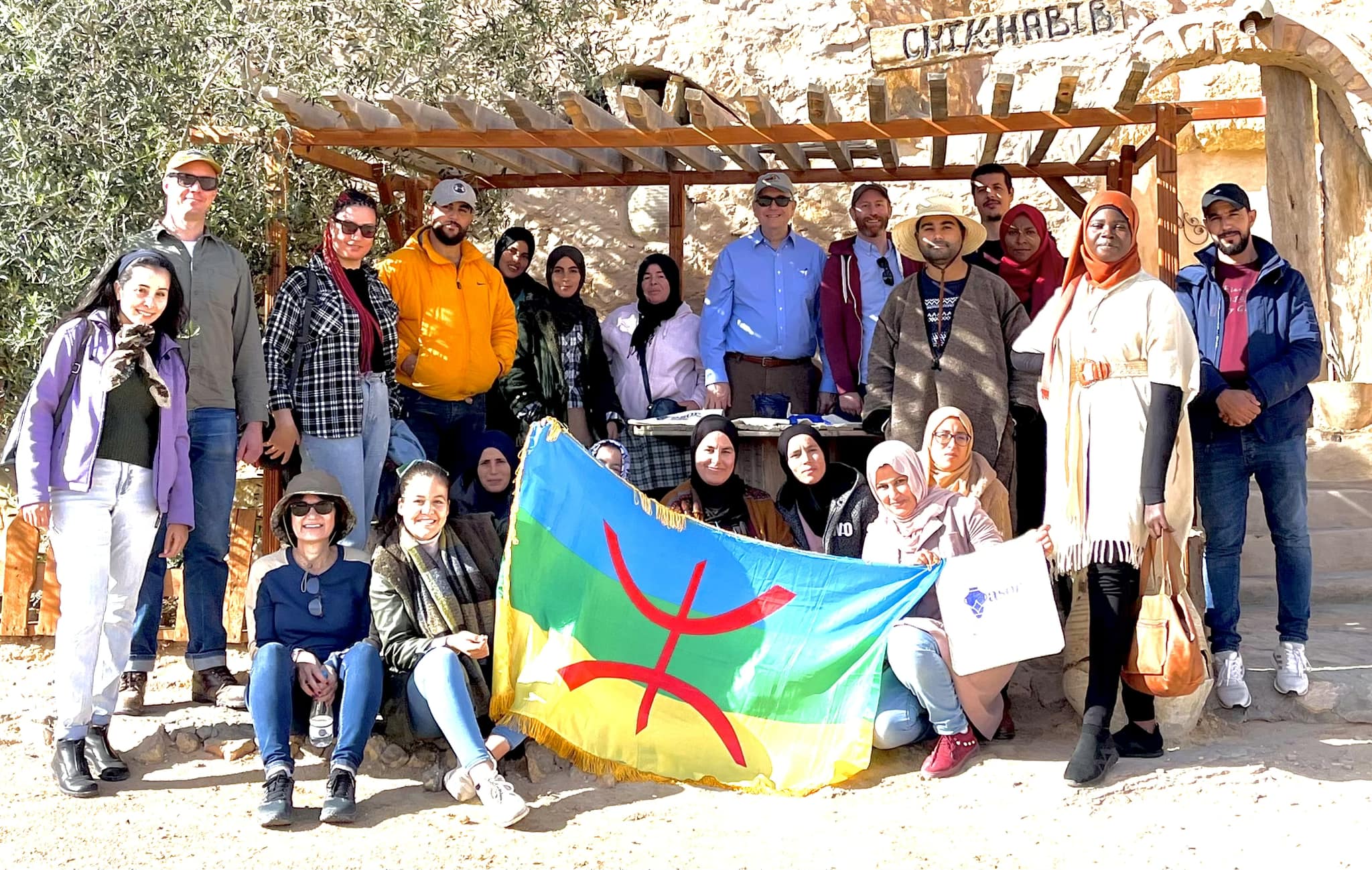
ASOR staff (Will Raynolds, Hanan Charaf, Andy Vaughn) with team members from Carthagina, Manouba, and the Women’s collective of Douiret. Photo taken at the historic Amazigh site of Douiret after completing training in geospatial documentation techniques.
This initiative has three components/goals:
- Train community members in heritage documentation and outreach.
- Foster relationships among local and regional communities using the tangible results from Component 1.
- Facilitate interfaith cooperation and communal dialogue for the protection of heritage.
Outreach event sponsored by Carthagina (one of ASOR’s partners) highlighting Amazigh traditional costume and dance in the community of Houmt Souk (Djerba, Tunisia). This event was attended by Jewish, Amazigh, and Ibadi community members.
The ASOR team has worked with Moroccan and Tunisian partners to address threats to religious and ethnic cultural heritage through documentation and protection activities. ASOR’s primary partner to date in Morocco is the High Atlas Foundation (HAF). In Tunisia, ASOR’s primary partners are The Heritage Laboratory of Manouba University, Carthagina, and the Tunisian Scouts “Tourath” Program. Many heritage sites in the region face acute threats, which could lead to the loss of an irreplaceable heritage.
ASOR CHI is committed to training and supporting members of religious and ethnic minority communities in heritage documentation and outreach. ASOR has developed an online hub of educational resources in Arabic, English, and French that provide tutorials on software applications useful in cultural heritage surveys. The tutorials focus on open-source software and are freely accessible to anyone interested in cultural heritage documentation.
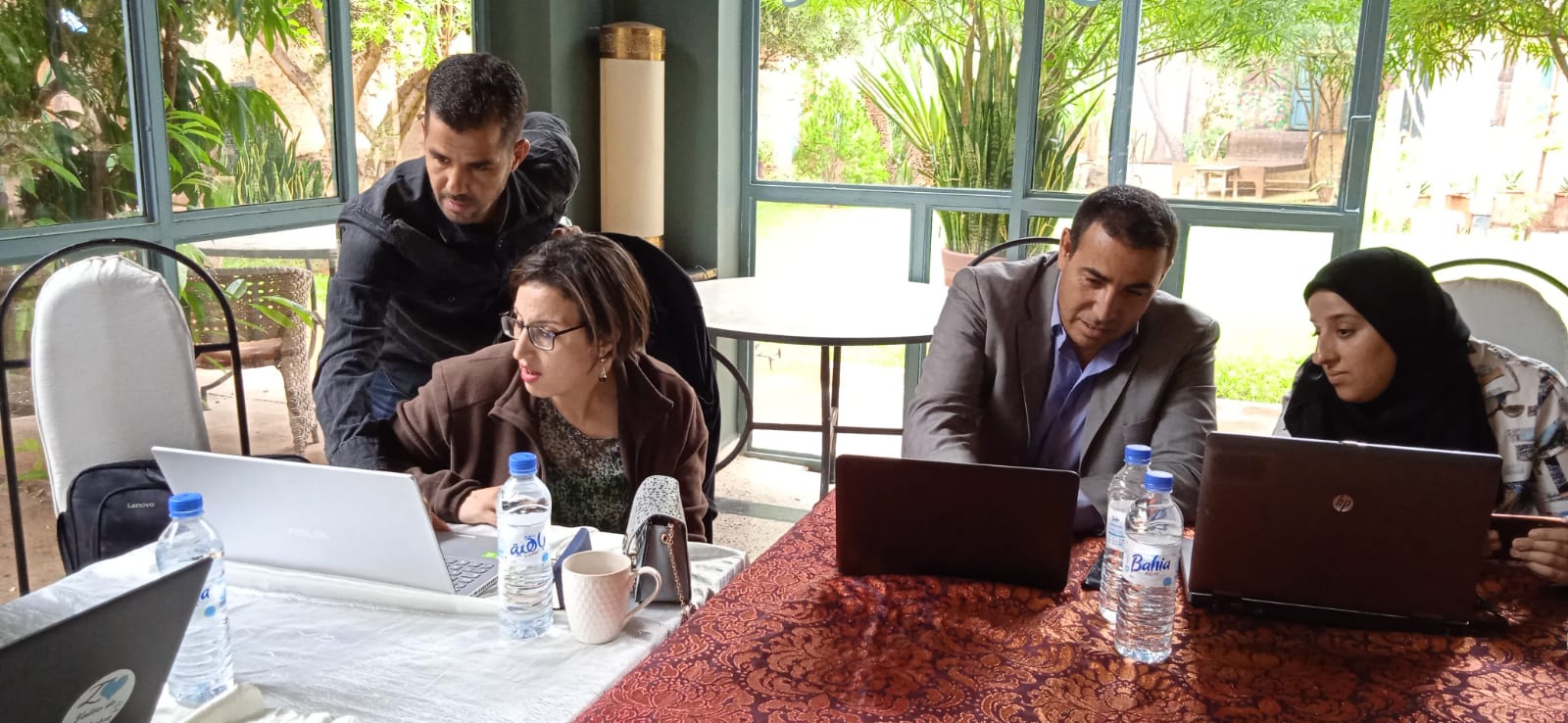
Amazigh participants from many cities and towns in southern Morocco traveled to Taroudant for the 2-day workshop on September 23 & 24, 2022.
Tutorials on KoboToolbox (and the associated KoboCollect app) and QGIS (an open-source Geographic Information System) form the core curriculum of the training program. These applications allow heritage specialists and minority groups in Morocco and Tunisia to identify and monitor damage to heritage sites using accessible online resources. Photogrammetry methods are also employed to create 3D models and orthorectified composite photographs for the long-term digital preservation of important architectural sites and material culture. Plans for additional tutorials on photo and video editing are forthcoming in 2023.
Photogrammetry is the use of two dimensional (2D) images to provide measurement data, often as point clouds or 3D models. Project partners learn how create 3D models using photogrammetry for heritage preservation. Above is a point cloud model produced by Samia Nabli (Manouba Heritage Laboratory) of a monastery door in Tunisia.
The documentation and training activities of the initial project enable ASOR CHI and its partners to facilitate inter-religious cooperation and community dialogue about heritage protection through workshops, events, and conversations. ASOR has supported heritage awareness events in Tunisia and Morocco intended to stimulate local appreciation for the heritage of religious and ethnic minorities. These events and conversations help to garner mutual respect within and among communities in Morocco and Tunisia, regardless of religion or belief. This project aims to foster community/government relations at local, regional, and national levels by using the tangible results of training and documentation to facilitate better alignment of government and community goals in heritage protection.
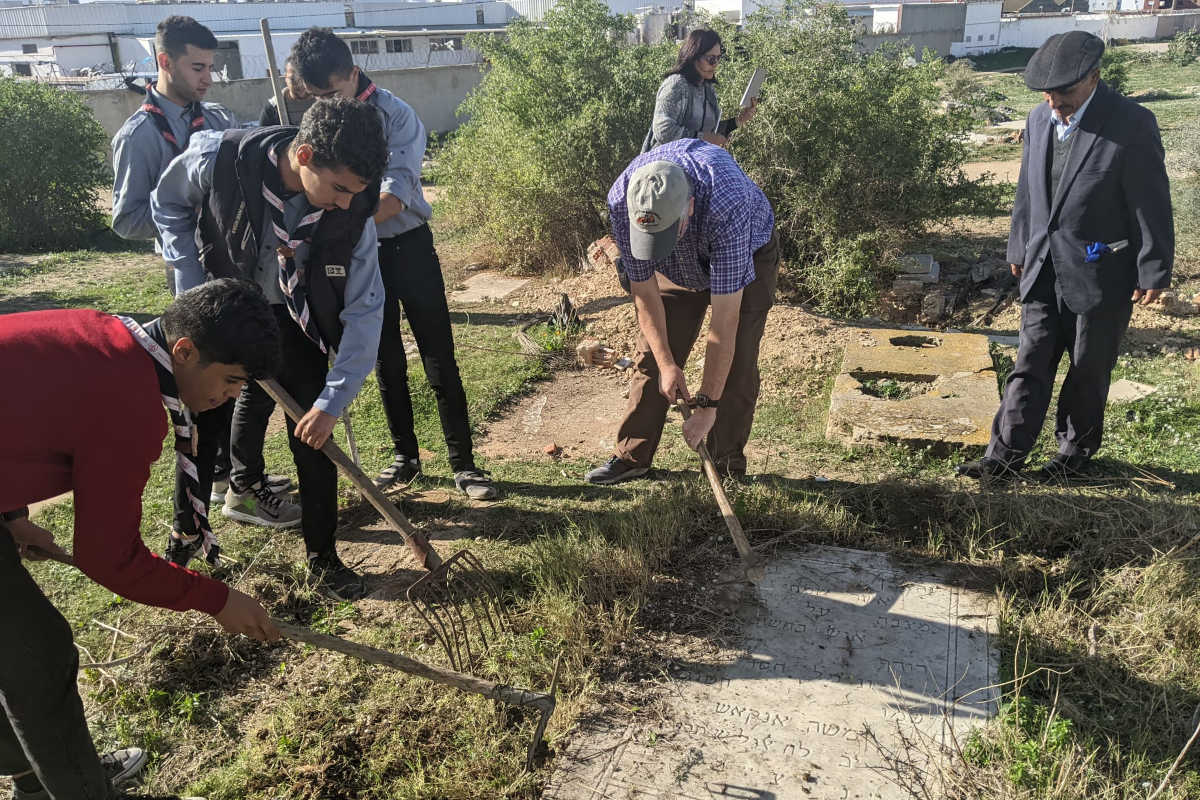
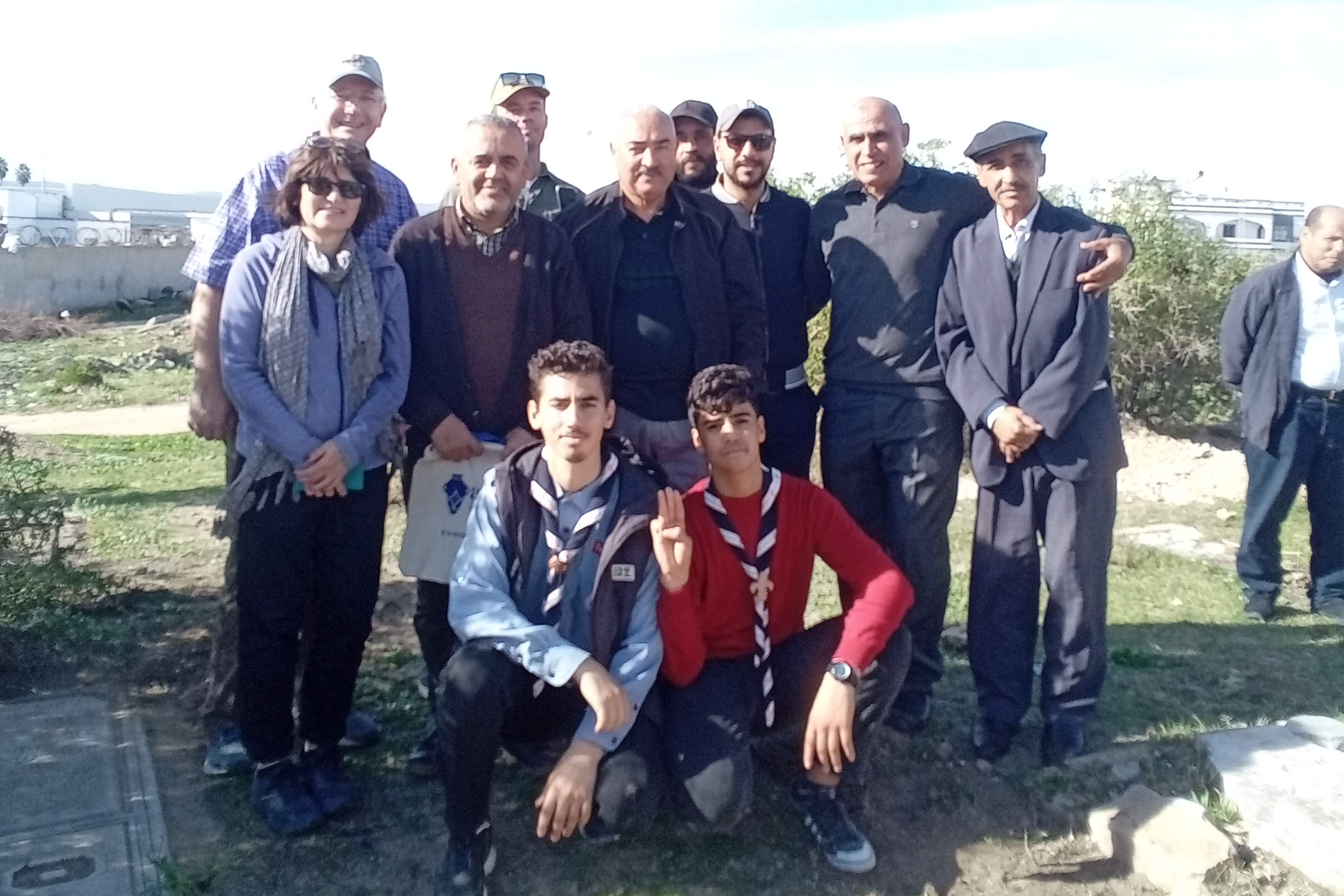
ASOR staff join members of the Association for Heritage Preservation of Soliman, the Manouba Heritage Lab, and local Tunisian Scouts to clean and document a Jewish cemetery in Soliman, Tunisia.
ASOR continues to seek new partners interested in working with the CHI team. ASOR and partners in the Maghreb continue to work on fulfilling components of the project while ASOR and its partners in Burkina Faso, Mali, and Niger have begun the documentation and training phase of the project. ASOR will continue to provide updates on all of its CHI activities on the ASOR website throughout 2023.
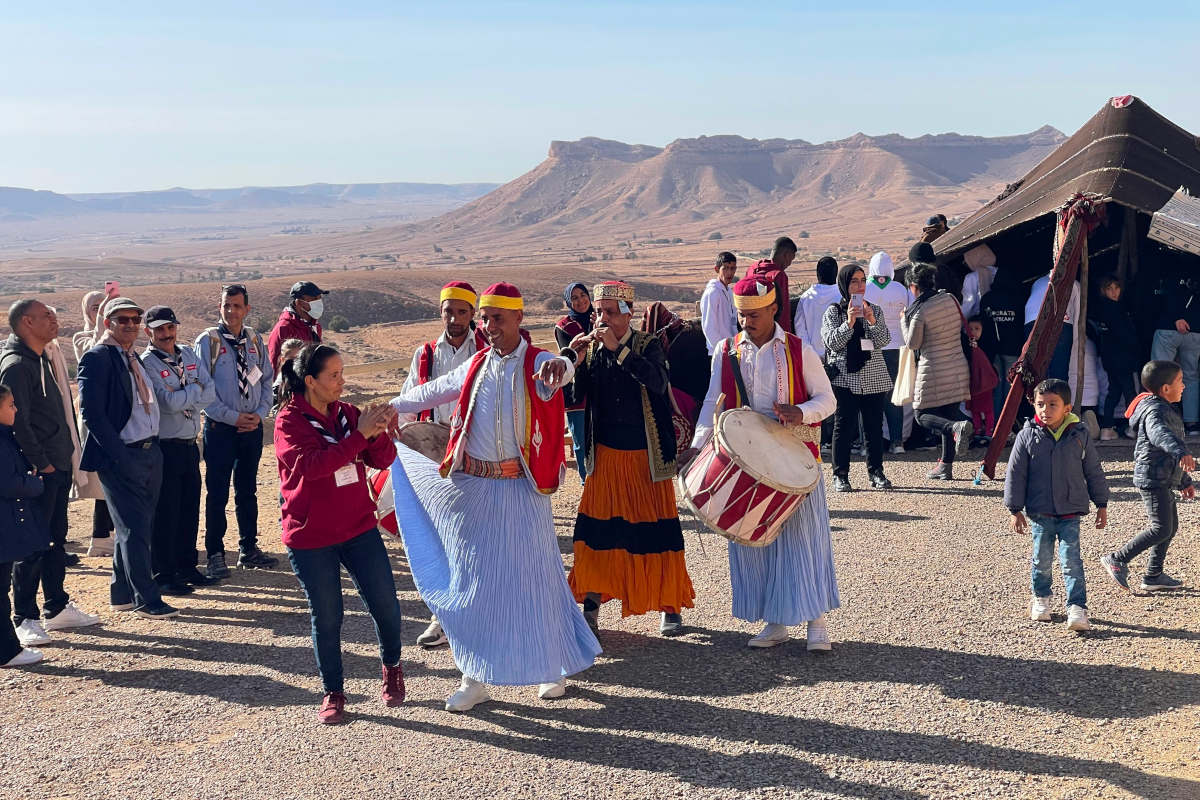
Part of an Amazigh heritage reenactment that took place during an outreach event at Douiret; sponsored by the Tunisian Scouts, Douiret Women’s Collective, Carthagina, and ASOR. More than 200 local children, youth, and adults participated.
Footnote:
[1]The American Society of Overseas Research (ASOR), founded in 1900, is a non-profit 501(c)(3) organization comprised of archaeologists, historians, linguists, and cultural heritage professionals who initiate, encourage, and support research and public understanding of cultures and the history of the Near East and the wider Mediterranean region. In 2014, ASOR launched the ASOR Cultural Heritage Initiatives (ASOR CHI) aimed at documenting the damage and destruction of cultural heritage in war-torn Syria, northern Iraq, and Libya. The ASOR CHI team has since expanded its efforts beyond documentation to successfully undertake a series of education and stewardship activities in post-conflict areas.
